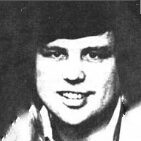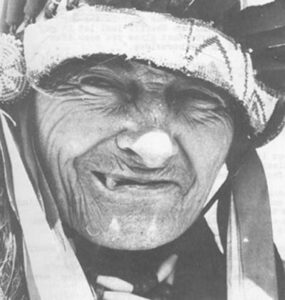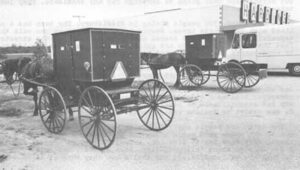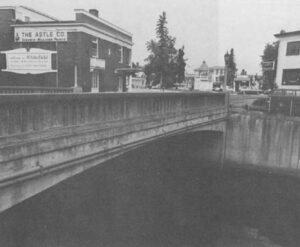Mike Masterson
- 1976

Fellowship Title:
- U.S.: The Conditions and Attitudes of its People in 1976
Fellowship Year:
- 1976

Our America: One Family in Search of a Nation
September 9, 1976
Sioux City, Iowa — Kathy and I sat staring blankly down the gleaming corridor. Mingled aromas of antiseptic, disinfectant and the smell of just plain hospital engulfed our nostrils. Everywhere were men and women in white garb shuffling to and from rooms. The activity and mostly-solemn expressions were some assurance if only imaginary, that Brandon, our rambunctious five-year-old was in good hands. An hour earlier while in hot pursuit of a wayward rubber ball, he hadn’t seen a thin wire stretched across the concrete in front of him. The metal ribbon had caught him at eye level and flipped him on the back of his head. So here we sat outside of the X-ray ward in St. Luke’s Lutheran Medical Center, awaiting the verdict. To pass the time, we talked about our journey northward from Harrison, Ark., my hometown. In ten days we had sprinted through western Missouri, clipped the northeast corner of Kansas and seen the southwestern-most wedge of Nebraska. There had been many now faces and friends in that time. Two of those

Our America: One Family in Search of a Nation
August 4, 1976
South Hero, Vermont — Here, on this sliver of an island wedged like a wiener between the buns of Vermont and New York, we again attached Lady K’s three-pronged umbilical cord and settled in for a few nights. Our campground was only a short distance to the shore of Lake Champlain, where we spent an afternoon snagging hand-sized bream for dinner. At its widest point, we were told, the lake covers 12 miles. It was relaxing to sit on a flat rock and stare out across the expanse of heaving gray water. Kathy said it was the first time since the journey began that we had stopped asking questions long enough to just sit and do nothing. She was right. We had covered 4,50O miles and 17 states in only two months. I also realized how physically tired we were growing. Brandon, ordinarily rambunctious as a kitten with a marble, sat watching his red and white floater through drooping eyelids. It was time to slow our pace, to adjust priorities and realign the schedule to

Our America: One Family in Search of a Nation
June 28, 1976
Williamsburg, Va. — In blissful inexperience we rolled out of Cape Hatteras, N.C., only half heeding the warnings about “endless strings of toll roads and bridges up north.” A few miles later we received our financial baptism to Bicentennialand. A pretty young miss seated on a park picnic table in Williamsburg, told me prices had almost doubled there since May…in observance, no doubt, of 200 years of independence. We had hoped to spend that night out of the Lady K, but the 16-year-old miss named Jody said most rooms in town, including the motel she was being paid to tout beside a sign marked “hotel information,” had climbed to about $28 nightly for a couple. We sought out a campground and nestled in for three days. Williamsburg seemed to me to be a good example of what can be done to attract tourists without throwing up a hot dog stand and a ferris wheel. The rustic cobblestone streets and brick buildings helped all three of us to actually feel part of what happened there 200

Our America: One Family in Search of a Nation
May 20, 1976
COLUMBUS, Miss. — The shanty shacks began in Eastern Arkansas and paralleled the Mississippi River delta well into Mississippi. I couldn’t help but notice them sitting small and alone washed by still seas of brown earth that lapped gently at the edges of doorsteps. I also noticed the children playing in the yards of dust. They seemed, for the most part, content in their games. It was a gray day. Planes swooped from the haze like giant phantom eagles across the concrete ribbon ahead, carefully depositing their airborne cargo on freshly-plowed ground. The drive across middle Mississippi was table-top flat. One young fellow with lengthy hair broke the monotony by passing in a roar. A sticker proclaiming, “Smile, This is Wallace Country” was stuck to the rear bumper. About 28,000 people, one-third of whom are black, reside in Columbus. It’s where the original Memorial Day began shortly after the Civil War and, since it largely escaped the ravages of that conflict, many antebellum homes stand as reminders of that era. There is also the nation’s
